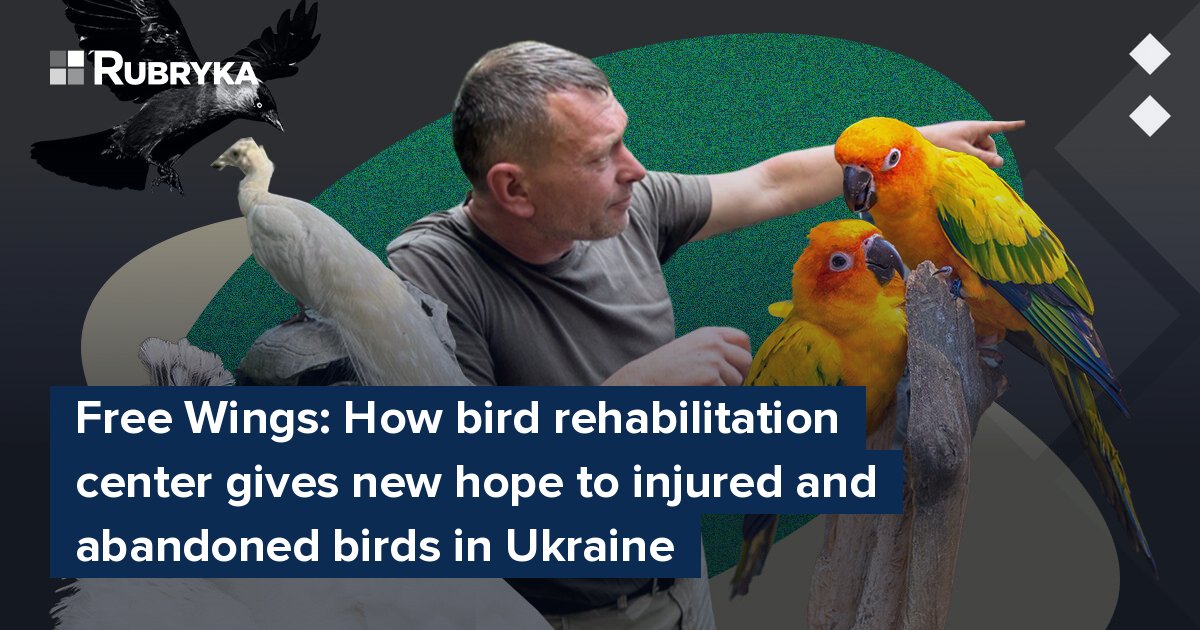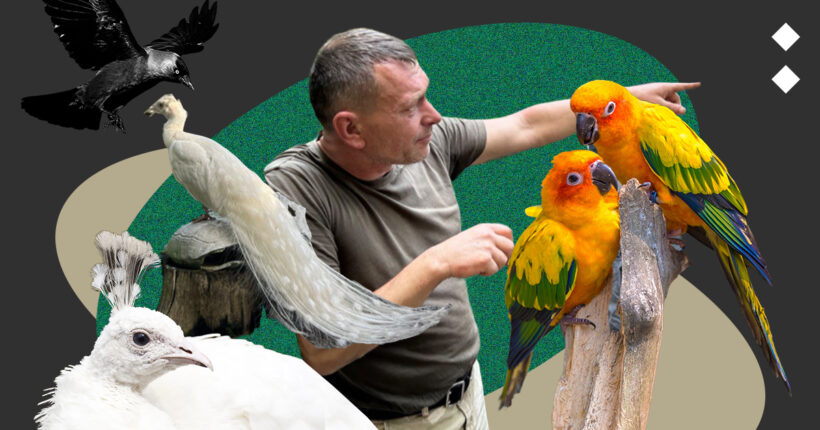
What is the problem?
Wild birds get injured occasionally—falling out of their nests, getting injured near roads, crashing into glass buildings, breaking their wings—the list goes on and on. Not all veterinary clinics are ready to treat wild birds, and almost none are prepared to accept them for rehabilitation or permanent housing. The latter may be needed if, after the injury, the bird can no longer survive in nature.
In addition to wild birds, domestic birds are also suffering now. After Russia's full-scale invasion of Ukraine, many bird owners had to flee abroad, which has continued to this day. Unfortunately, not everyone has the opportunity to take birds with them, and it is not easy to find those who will shelter animals.
So what to do with these birds?
Rubryka visited the Free Wings bird rehabilitation center in the Lviv region and met ornithologist Viktor Shevlinskyi, who took on the mission of saving birds. In this material, we tell you how Free Wings center lives and how anyone can help the project.
What is the solution?
Viktor Shevlinskyi, this year's UAnimals animal welfare award holder, created the Free Wings rehabilitation center for birds.
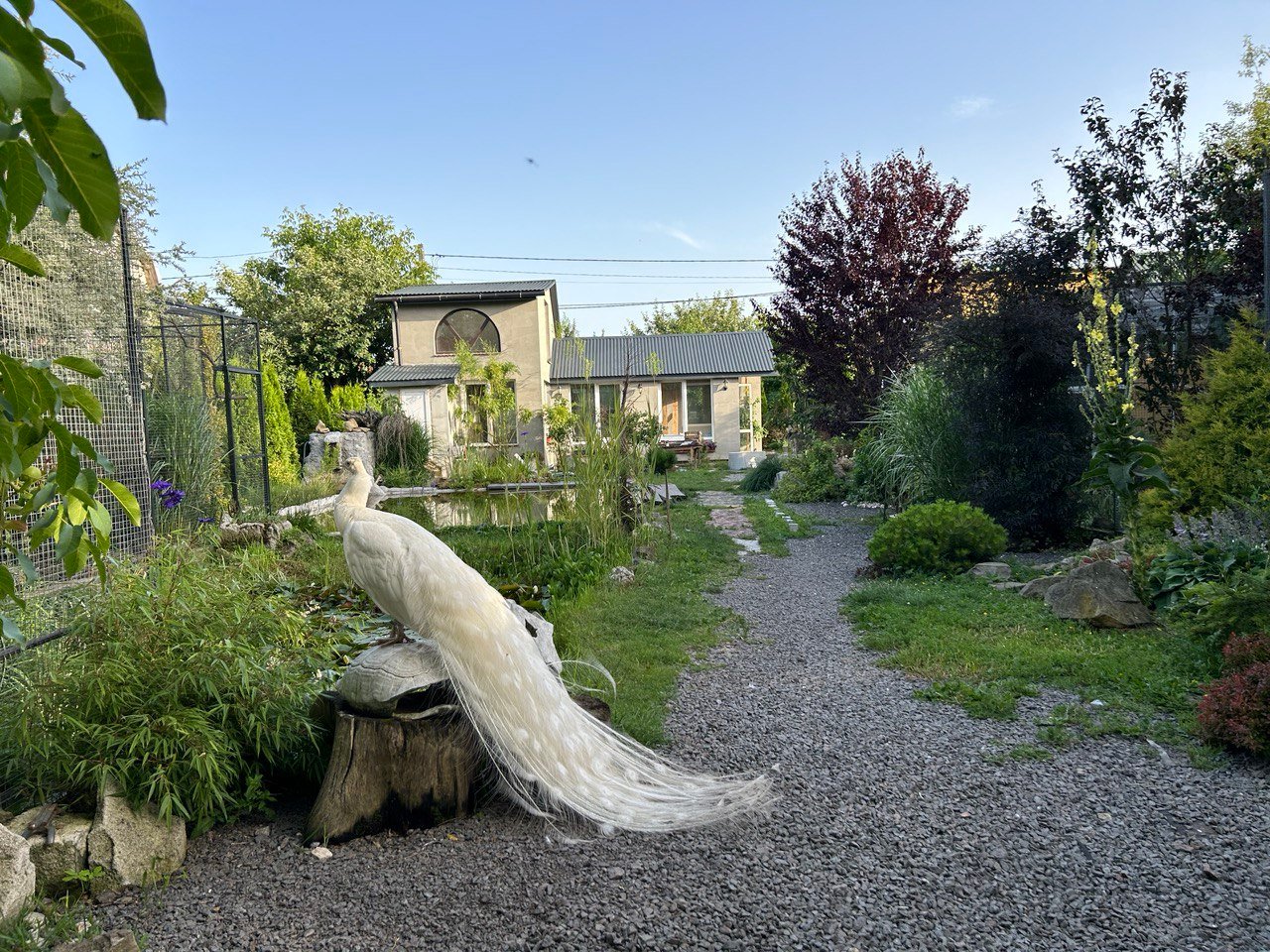
The yard of Viktor Shevlinskyi, the founder of the Free Wings bird rehabilitation center.
Everything we saw reminded us of the house of legends, where an unusual sculpture surprises us at every step, an original pond with colorful carp, shells suspended from tree branches above a hammock, or, unexpectedly, the skull of some large animal. The impression of a paradise garden is created by dozens of bird voices, which you don't get used to immediately. Walking through the yard, you can suddenly notice roosters sitting almost at the very top of a five-meter spruce tree, a peacock perched on a high stump, or crows, which routinely roost on a stone hearth.
Shevlinskyi built all this in 23 years of fruitful work. "That was my plan," he says. "I've been dreaming about it since the fourth grade."
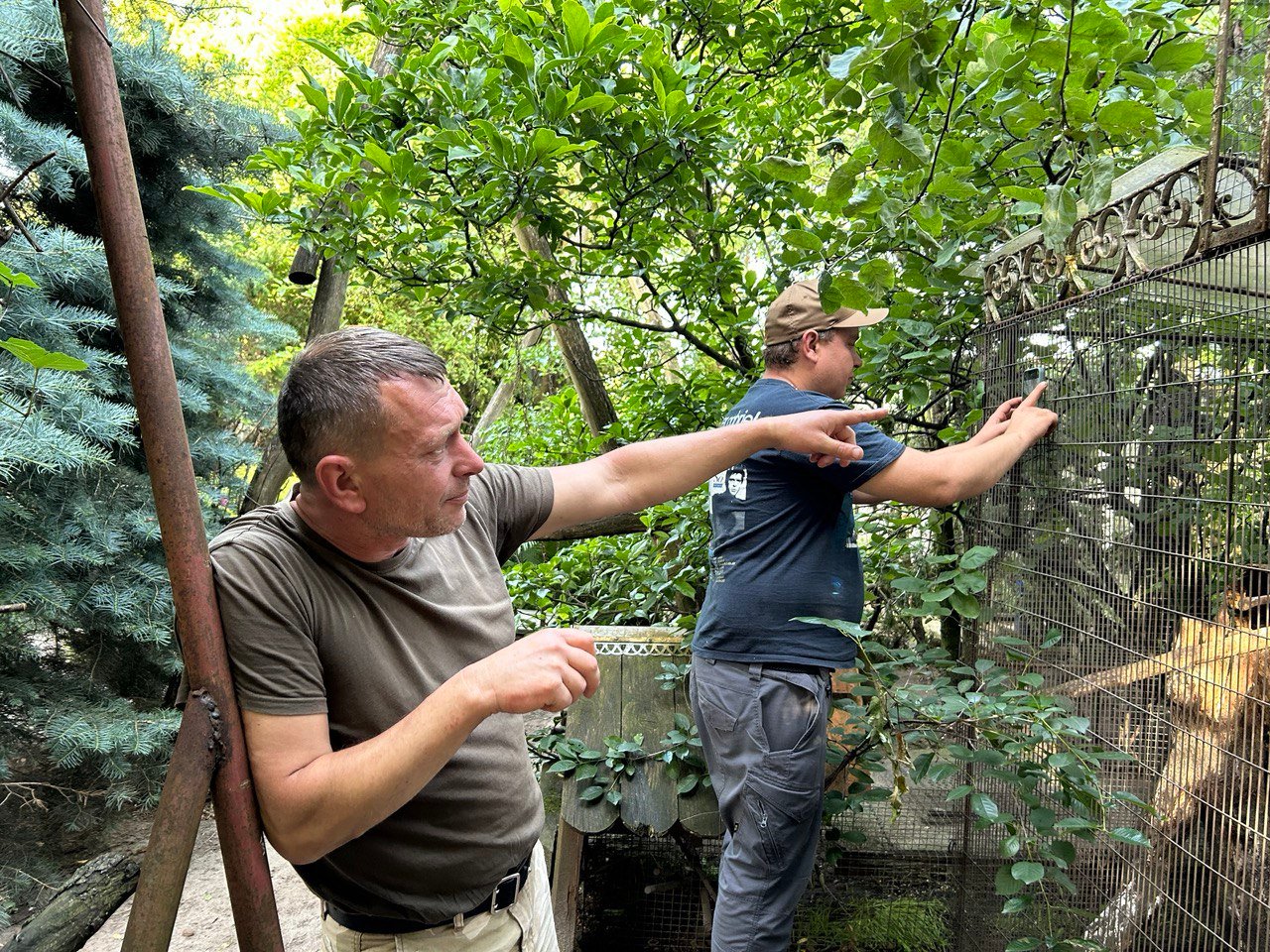
Viktor Shevlinskyi near the bird enclosures. Most of the birds have free access to the territory, and even after rehabilitation, they often stay in Shevlinskyi's yard because they are used to the area.
Where do so many birds come from?
Now, about 386 birds of 64 species from all over Ukraine reside in Free Wings. They get here from everywhere, under different circumstances.
"Sometimes these are the consequences of evacuation, sometimes — the consequences of hostilities. It happens that a person was driving, stopped, saw a bird, and brought it here. All this is very situational," Shevlinskyi says.
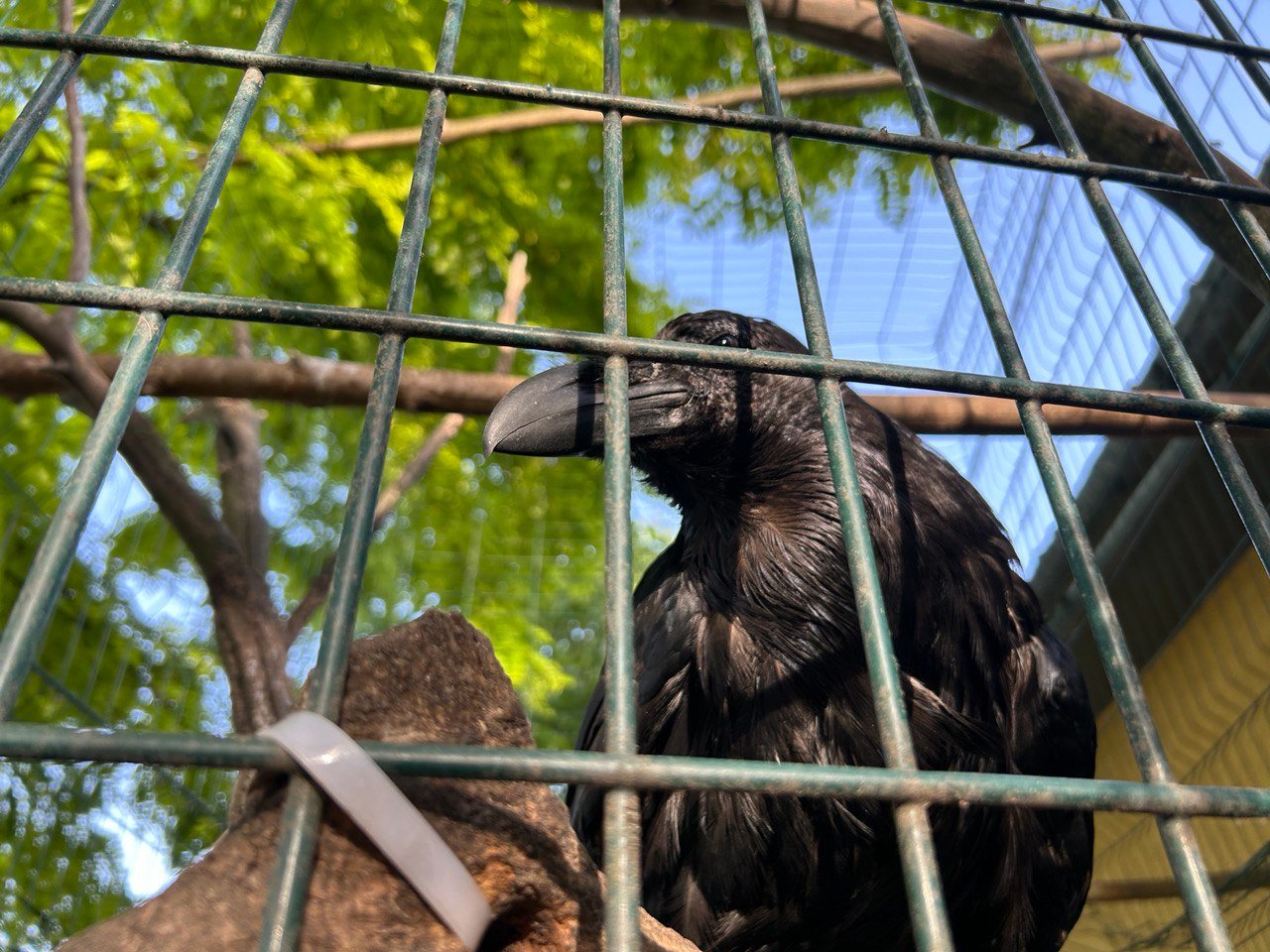
Crook Tazik-17. The previous 16 already live in the wild.
For example, a crow named Tazik was found by a young girl. By the way, this is already the 17th Tazik in a row — the previous 16 ravens have already been treated by Shevlinskyi and released into the wild.
"This is the silver pheasant, Mykola," Shevlinskyi leads us further through the yard. He points to the Swinhoe's pheasant, a species of the pheasant family.
Some birds get here from the front. For example, two peregrine falcons with broken bones — the fastest birds on the planet, which fly 5.5 thousand during the annual migration — were brought from Kherson by German journalists.
All birds in the yard have access from the cages to the territory, can walk freely, and return to the feeders. There are also ponds for waterfowl living in Free Wings.
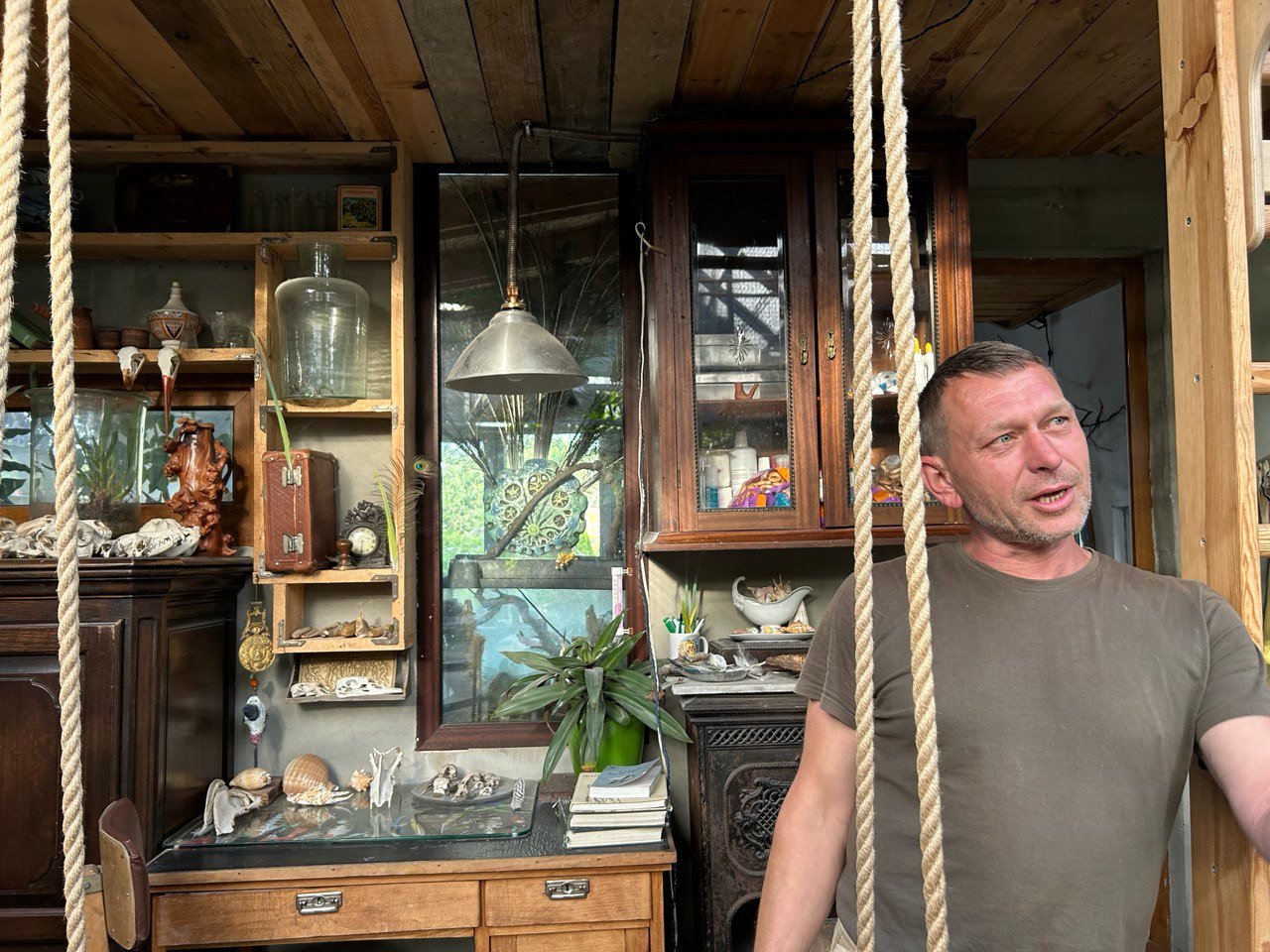
The building for birds in Viktor Shevlinskyi's yard looks like a naturalists-researcher's office — feathers, skulls of various animals, and souvenirs from around the world.
Some birds that once were in the Free Wings are already free. Over the past year, Shevlinskyi's released 200 birds; however, some "patients" remain here forever. For example, both male long-eared owls have an amputated right wing and will no longer be able to forage for food on their own. Some birds simply do not want to fly. Over time, they begin to perceive temporary housing in the center as a nesting place and stay here forever.
Parrots in exchange for hamsters
Rubryka got to the center, not by chance. We came here with the Hamster Rescue Center members to pick up five endangered rodents. Previously, Rubryka reported about the work of the Center for the Rescue of Hamsters and its founder. Rodentologist Mykhailo Rusin resettles the European hamster and other endangered hamsters as far as possible from populated areas, where the rare animal can be poisoned, to safer and more distant natural places.
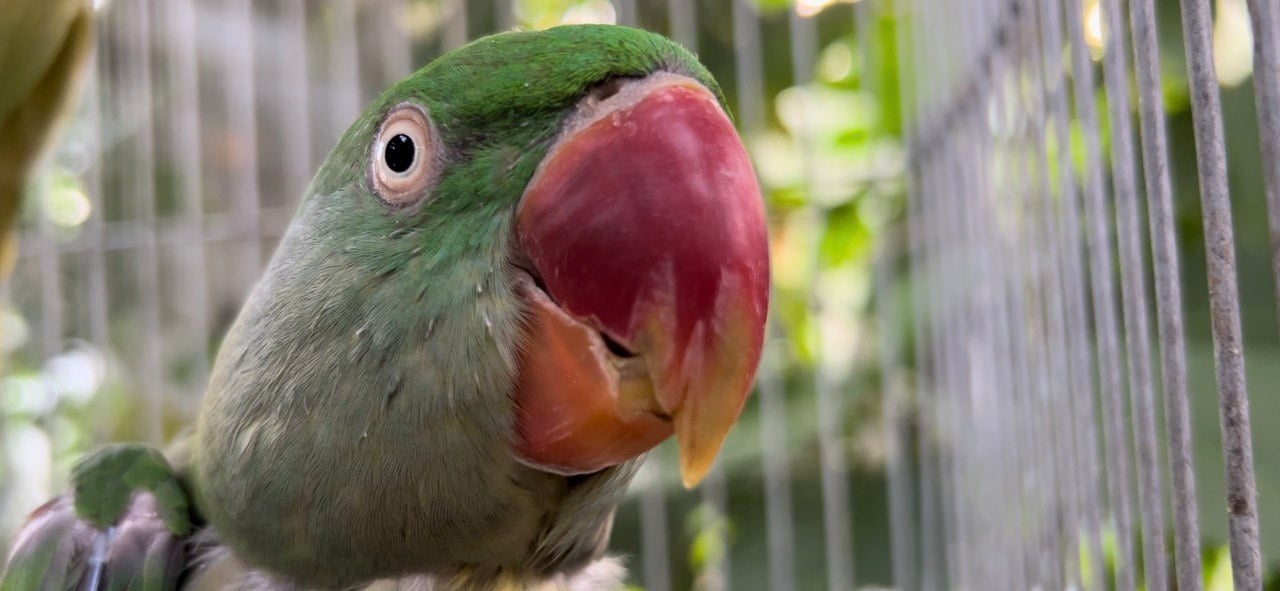
Parrots in Free Wings are not released into the wild and are permanent center residents.
Joking that it was an exchange, we brought a pair of budgies from Kyiv to Free Wings. They were handed over by people who decided to move abroad and couldn't take the birds with them. However, they took responsibility for the birds' future lives. Knowing about the existence of Free Wings, they transferred the parrot to a rehabilitation center. Now, the Kyiv parrots will live with the Mykolaiv parrots, which got here under the same circumstances.
"Ideally, we will find a wonderful family for them, in which they will continue to live happily," says Shevlinskyi.
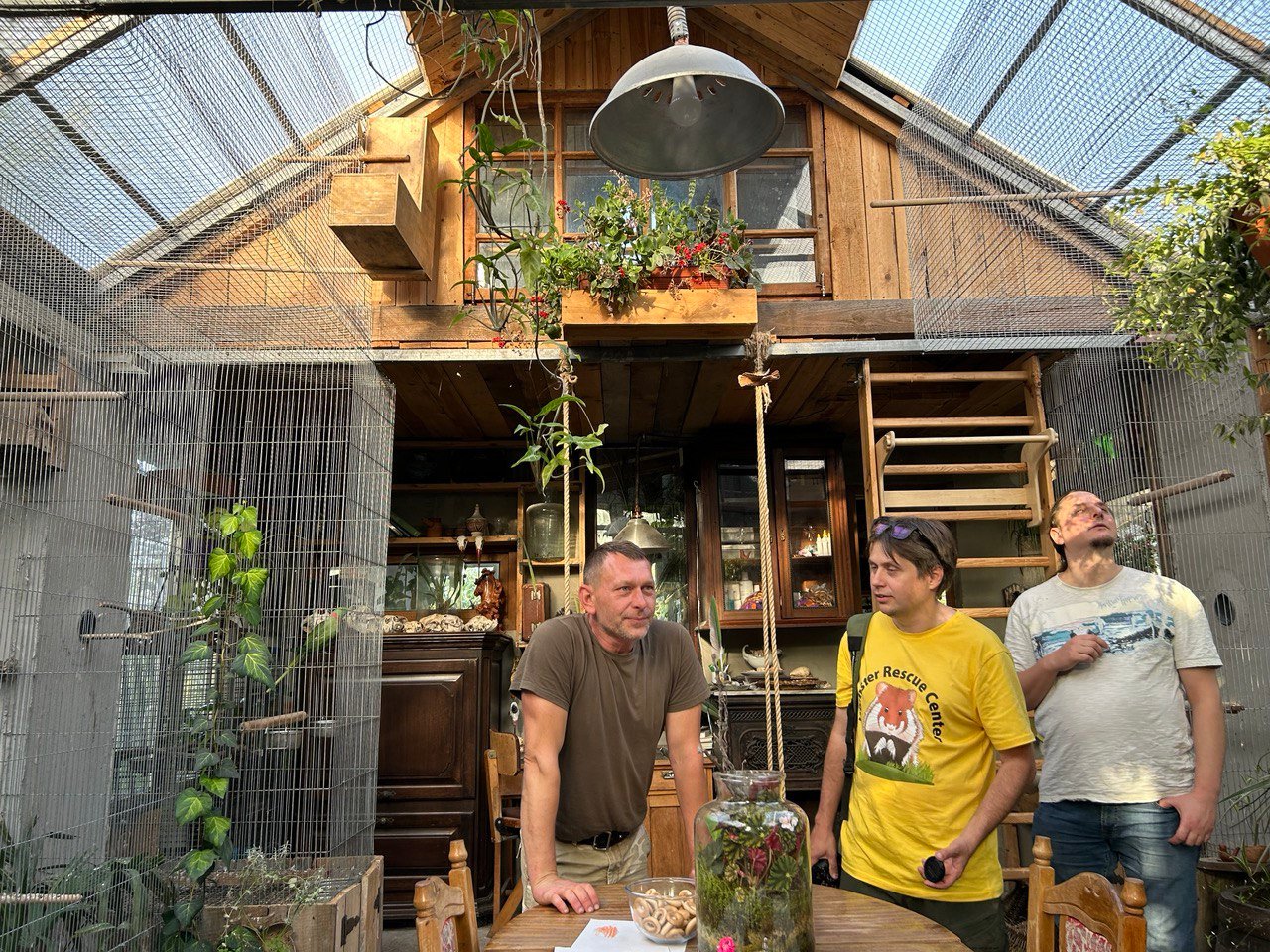
A house built especially for parrots. It is heated in winter, so birds can live here all year round.
How to help the Free Wings Center?
Shevlinskyi has veterinary education and examines birds, but the center lacks the equipment to perform operations and treat birds.
"All this exists with the help of other veterinarians. Donations are given to us, but they are only enough for medicines and drugs," Shevlinskyi says.
All healthy birds are the fruit of the charity work of those who wish to help Free Wings. For those willing to help, Free Wings Facebook and Instagram pages have all the necessary information.


